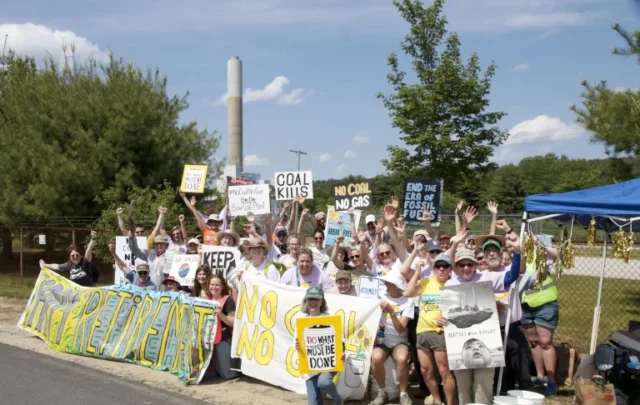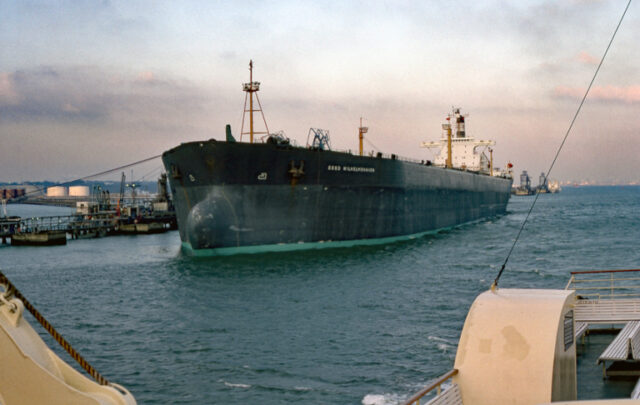My latest for Recharge:
It is rare for a report to hold the potential to change the world, but one study published last month may do just that. The Recommendations of the Task Force on Climate-related Financial Disclosures (TCFD — a group of experts assembled by the G20’s Financial Stability Board) aims to give investors, lenders and insurers visibility of how climate-change risk will affect individual businesses, and a road map for reacting to it.
The report presents the results of a year of deliberations by 32 representatives of companies with a combined market capitalisation of $1.5trn and financial institutions responsible for assets of $20trn. Their intention is for the capital markets to behave consistently with the aims of the Paris Agreement on climate change — ie, to progressively retreat from fossil fuels, and increasingly favour clean-energy investments such as wind and solar.
A reminder of the background. The target of the Paris Agreement, agreed by every independent nation on the planet in December 2015, is to keep global warming at less than 2˚C. If society is to do that, most reserves of fossil fuel will have to stay underground, unused. Since companies view all reserves as having financial value, this means a risk — should governments do what they promised to do in Paris, or some it — of what investors call “stranded assets”: having money invested in a resource that you then can’t use. Investing more money to add to this stock of potentially unburnable reserves creates what can be thought of as a “carbon bubble”. The risk of stranded assets is growing with every decision made by fossil-fuel companies to invest in yet more unnecessary fossil-fuel projects: new coal mines, new oil and gas fields, new fracking, new fossil-fuel power plants, and so on.
The Bank of England awoke to this issue as a systemic risk in September 2015. After listening to arguments by Carbon Tracker, a financial think-tank I chair, and other worried financial experts, they came to fear that fossil-fuel asset-stranding could threaten global financial stability.
The effort to stop this threat soon went international. The G20’s Financial Stability Board set up a taskforce in December 2015 with a brief to specify the information investors need to be provided with in order for them to avoid stranded-asset risk. It is chaired by no less a figure than Michael Bloomberg.
Key players in the capital markets quickly began seeing writing on walls. For example, ratings agency Moody’s said it will be using the Paris Agreement in future credit assessments of companies. Suncor, the biggest oil producer in the Canadian tar sands, has been talking to the Canadian government about being rewarded for leaving some its reserves untouched underground.
As soon as the report came out on 14 December, more than 30 organisations — including Aviva, AXA, BHP Billiton, JPMorgan and Daimler — announced their support for its conclusions. Many more will surely follow, because the starting point in the TCFD’s proposed road map is that companies should include climate-related financial disclosures in their public financial filings. Not to do so would be to ignore material risks to organisations, the Task Force professes.
Those disclosures should span the core elements of how organisations operate: governance, strategy, risk management and the setting of metrics and targets. Crucially, the TCFD advocates that companies should align business models with a 2°C future. Remuneration of chief executives and boards should be linked to the extent to which their companies are hitting targets aimed at a sub-2°C world, the taskforce says.
Even before the Paris Agreement was adopted last year, climate risk was high on the agenda of the world’s largest institutional investors and asset managers. Resolutions asking oil and gas companies to stress-test their business models against a 2°C-consistent climate outcome were generally opposed by boards, but received record-high support levels from shareholders. Now there will be no hiding place. The TCFD report provides a template for best practices and a road map for better disclosure that fossil-fuel companies and asset managers will find hard to ignore.
Some investors have not waited for the taskforce’s advice. By the time of the Paris climate summit, investment funds with collective assets of $3.4trn had either divested from all or some fossil fuels, or announced their intention to.
This movement continued to grow in 2016. Last month, the value of funds divested passed $5trn. Some 80% of the funds involved, spanning 688 institutions, are managed by commercial investment and pension funds.
This shows that the campaign is now mainstream in the capital markets.
One of the most notable divestors is one of Sweden’s state pension funds, AP4, which is not just divesting its $14.5bn equity portfolio, but is deliberately reinvesting some of the proceeds in low-carbon funds.
What next? I predict a snowball effect, and much drama on Wall Street — much of it to the great benefit of the renewables industries.





